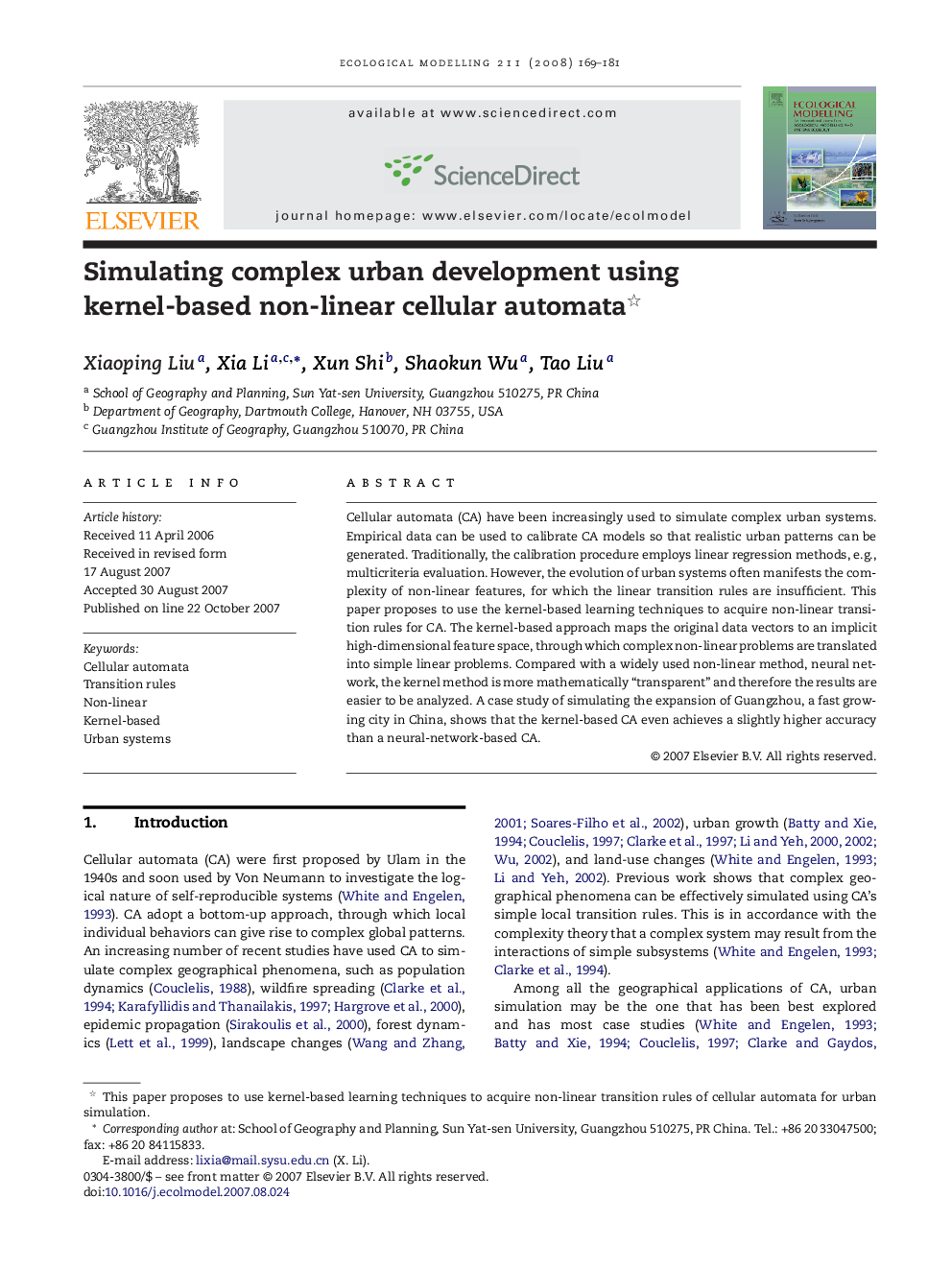| Article ID | Journal | Published Year | Pages | File Type |
|---|---|---|---|---|
| 4378267 | Ecological Modelling | 2008 | 13 Pages |
Abstract
Cellular automata (CA) have been increasingly used to simulate complex urban systems. Empirical data can be used to calibrate CA models so that realistic urban patterns can be generated. Traditionally, the calibration procedure employs linear regression methods, e.g., multicriteria evaluation. However, the evolution of urban systems often manifests the complexity of non-linear features, for which the linear transition rules are insufficient. This paper proposes to use the kernel-based learning techniques to acquire non-linear transition rules for CA. The kernel-based approach maps the original data vectors to an implicit high-dimensional feature space, through which complex non-linear problems are translated into simple linear problems. Compared with a widely used non-linear method, neural network, the kernel method is more mathematically “transparent” and therefore the results are easier to be analyzed. A case study of simulating the expansion of Guangzhou, a fast growing city in China, shows that the kernel-based CA even achieves a slightly higher accuracy than a neural-network-based CA.
Related Topics
Life Sciences
Agricultural and Biological Sciences
Ecology, Evolution, Behavior and Systematics
Authors
Xiaoping Liu, Xia Li, Xun Shi, Shaokun Wu, Tao Liu,
